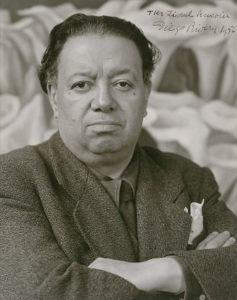Many of our Collective Ancestors have had tremendous impact on present circumstances and mindsets. Here are a few highlighted in Rainbows at the Crossroads.
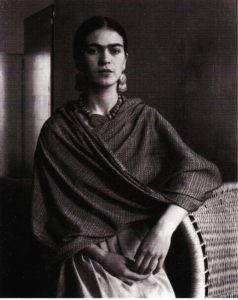 Frieda Kahlo (1907 – 1954) A Mexican Artist who related to her indigenous roots and her contemporary social situation. She painted in a surrealist style that touched many feminists interest in personal liberation.
Frieda Kahlo (1907 – 1954) A Mexican Artist who related to her indigenous roots and her contemporary social situation. She painted in a surrealist style that touched many feminists interest in personal liberation.
 Eleanor Roosevelt (1884 – 1962), First Lady of USA, Writer, Advocate, and Speaker who dedicated her life to civil rights advocacy and social justice. She wrote a very popular column “My Day” and several books including “The Moral Basis of Democracy. She wrote:
Eleanor Roosevelt (1884 – 1962), First Lady of USA, Writer, Advocate, and Speaker who dedicated her life to civil rights advocacy and social justice. She wrote a very popular column “My Day” and several books including “The Moral Basis of Democracy. She wrote:
“No one can make you feel inferior without your consent.”
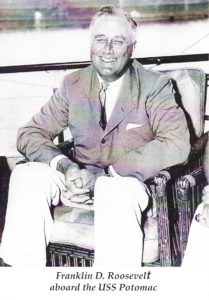 Franklin Delano Roosevelt (1882 – 1945) FDR directed the federal government during most of the Great Depression, implementing his New Deal domestic agenda in response to the worst economic crisis in U.S. history. Roosevelt defined American liberalism throughout the middle third of the 20th century. His third and fourth terms were dominated by World War II, which ended shortly after he died in office.
Franklin Delano Roosevelt (1882 – 1945) FDR directed the federal government during most of the Great Depression, implementing his New Deal domestic agenda in response to the worst economic crisis in U.S. history. Roosevelt defined American liberalism throughout the middle third of the 20th century. His third and fourth terms were dominated by World War II, which ended shortly after he died in office.
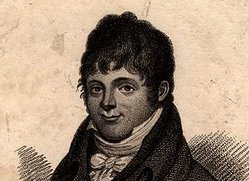 Daniel O’Connell (1775-1847) was an Irish political leader. He campaigned for the right for Catholics to sit in the Parliament, denied for over 100 years — and Repeal of the Union between Ireland and Great Britain. In 1841, Daniel O’Connell became the first Roman Catholic Lord Mayor of Dublin since 1688.
Daniel O’Connell (1775-1847) was an Irish political leader. He campaigned for the right for Catholics to sit in the Parliament, denied for over 100 years — and Repeal of the Union between Ireland and Great Britain. In 1841, Daniel O’Connell became the first Roman Catholic Lord Mayor of Dublin since 1688.
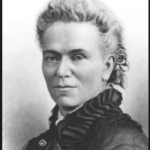 Matilda Joslyn Gage (1826 – 1898) This important foremother was a founder of the Woman’s Suffrage Movement, author of Woman, Church and State, adopted into the Wolf Clan of the Mohawk Nation, arrested for attempting to register to vote, and an inspiration to L. Frank Baum, her son-in-law, when he wrote the Wizard of Oz books.
Matilda Joslyn Gage (1826 – 1898) This important foremother was a founder of the Woman’s Suffrage Movement, author of Woman, Church and State, adopted into the Wolf Clan of the Mohawk Nation, arrested for attempting to register to vote, and an inspiration to L. Frank Baum, her son-in-law, when he wrote the Wizard of Oz books.
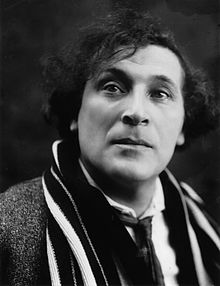 Marc Chagall (1887 – 1985) was a Russian-French artist of Belarusian Jewish origin. He experienced modernism’s “golden age” in Paris, yet he remained most emphatically a Jewish artist, whose work was one long dreamy reverie of life in his native village of Vitebsk. “When Matisse dies,” Pablo Picasso remarked in the 1950s, “Chagall will be the only painter left who understands what color really is.”
Marc Chagall (1887 – 1985) was a Russian-French artist of Belarusian Jewish origin. He experienced modernism’s “golden age” in Paris, yet he remained most emphatically a Jewish artist, whose work was one long dreamy reverie of life in his native village of Vitebsk. “When Matisse dies,” Pablo Picasso remarked in the 1950s, “Chagall will be the only painter left who understands what color really is.”
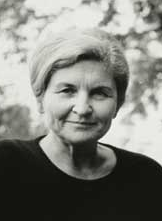 Marija Gimbutas (1921 – 1994), Archeologist, studied the Female Divine in Ancient Cultures in Eastern Europe and authored 20 books and more than 200 articles on European prehistory and folklore. She described equal relationships among all peoples, the sacredness of Nature in ancient egalitarian cultures, and the meaning of symbols. Excellent source on Gimbutas and her work
Marija Gimbutas (1921 – 1994), Archeologist, studied the Female Divine in Ancient Cultures in Eastern Europe and authored 20 books and more than 200 articles on European prehistory and folklore. She described equal relationships among all peoples, the sacredness of Nature in ancient egalitarian cultures, and the meaning of symbols. Excellent source on Gimbutas and her work
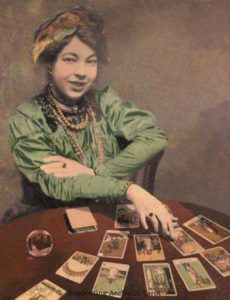 Pamela Colman Smith (1878 – 1951), artist of the Rider-Waite Tarot Deck who also worked as a set designer in the theater and became a devote Catholic in later life. (for more bio information and background about the Artwork and Time, see the book in the deluxe Tarot deck.)
Pamela Colman Smith (1878 – 1951), artist of the Rider-Waite Tarot Deck who also worked as a set designer in the theater and became a devote Catholic in later life. (for more bio information and background about the Artwork and Time, see the book in the deluxe Tarot deck.)
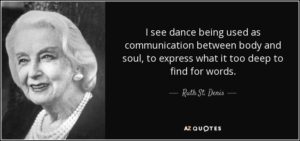 Ruth St. Denis (1879 – 1968), dancer, writer on Spirituality and Dance (to read her inspiring quotes, see Wisdom Comes Dancing: Selected Writings of Ruth St. Denis on Dance, Spirituality and the Body) https://www.azquotes.com/author/3870-Ruth_St_Denis
Ruth St. Denis (1879 – 1968), dancer, writer on Spirituality and Dance (to read her inspiring quotes, see Wisdom Comes Dancing: Selected Writings of Ruth St. Denis on Dance, Spirituality and the Body) https://www.azquotes.com/author/3870-Ruth_St_Denis
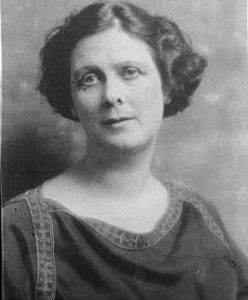 Isadora Duncan’s (1877 – 1927) philosophy of dance moved away from rigid ballet technique and towards natural movement. To restore dance to an art form instead of merely entertainment, she strove to connect emotions and movement. Born in California, she lived in Western Europe and the Soviet Union.
Isadora Duncan’s (1877 – 1927) philosophy of dance moved away from rigid ballet technique and towards natural movement. To restore dance to an art form instead of merely entertainment, she strove to connect emotions and movement. Born in California, she lived in Western Europe and the Soviet Union.

